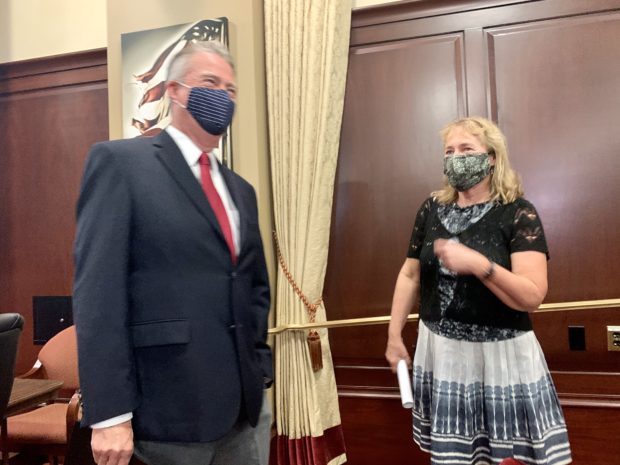
Gov. Brad Little said he doesn’t think it’s time to change laws dealing with school closure authority or the role of public health districts.
The issue has come up in recent weeks as Idaho schools reopen for the new year. Several legislators hoped to debate school closure authority last week, but Little did not include the issue on a limited list of topics for a three-day special session. But that didn’t stop the Senate from passing a nonbinding resolution pledging to consider legislation on a number of topics in 2021, including public health districts’ authority.
Little told reporters during a Statehouse news conference Thursday that he would welcome a debate during the legislative session and believes there are opportunities to improve the existing system.
But he wasn’t ready to do away with public health districts, saying Idaho needs a place to house that expertise.
“I don’t think right now is time to turn over the apple cart, because we have got a crisis,” Little said.
The way things stand, Idaho’s seven independent public health districts assign schools to coronavirus risk categories, aligning to nonbinding state reopening guidelines that Little and the State Board of Education signed off on this summer. Health districts also advise school officials on their reopening plans and do have the authority to issue quarantine or closure orders.
In recent weeks, Little said he’s been studying the history of Idaho’s public health districts, which goes back 50 years, and the state’s overall public health response, which dates to 1918.
“As we look back on this pandemic we will probably make some changes, but it’s in place for a pretty good purpose,” Little said.
In other news, Little said Idaho will remain in the fourth stage of the four-stage Idaho Rebounds reopening plan for at least another two weeks because COVID-19 hospitalization rates remain too high.
However, Little and State Epidemiologist Dr. Christine Hahn shared several encouraging developments.
“Case rates are declining; they have been declining now for several weeks,” Hahn said.
Another positive sign is the percent of positive COVID-19 tests has decreased to just over 8 percent, Hahn said.
